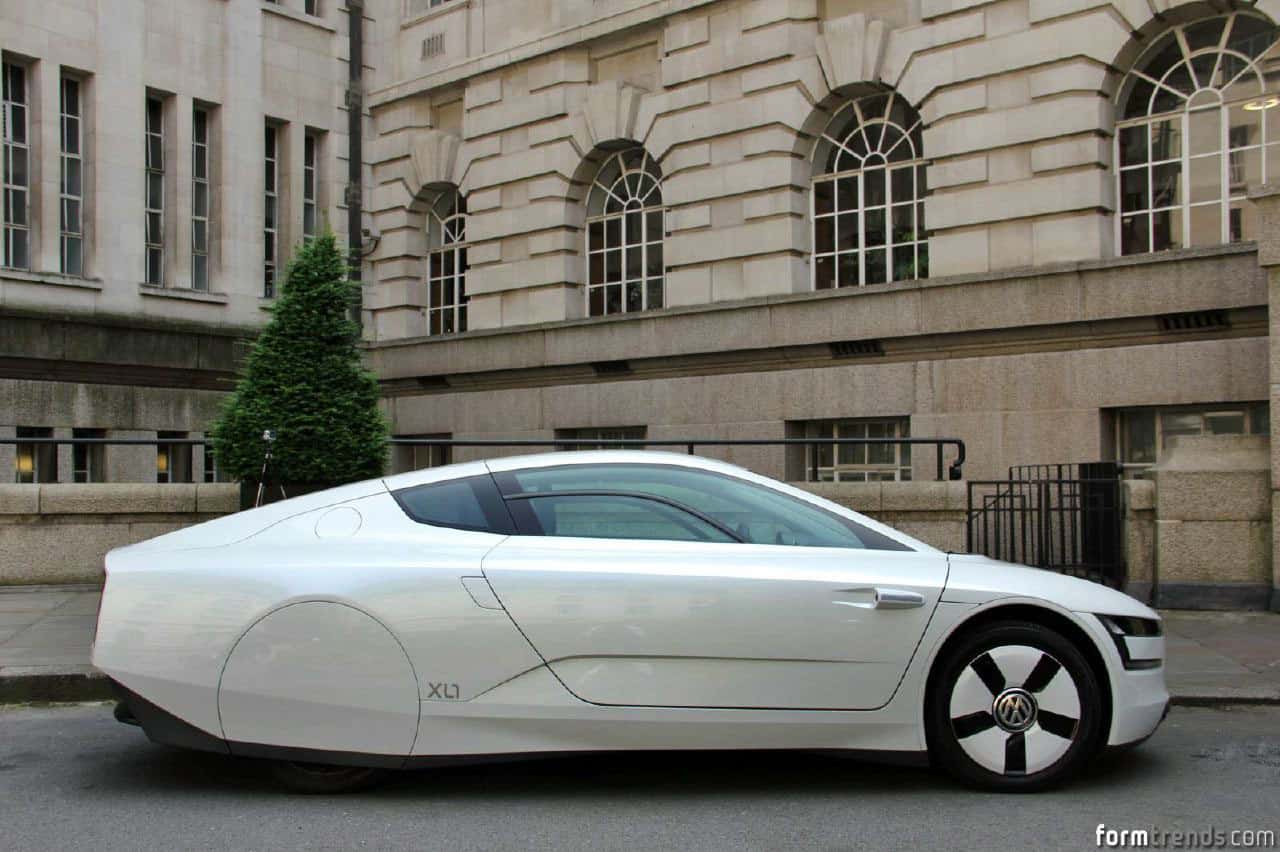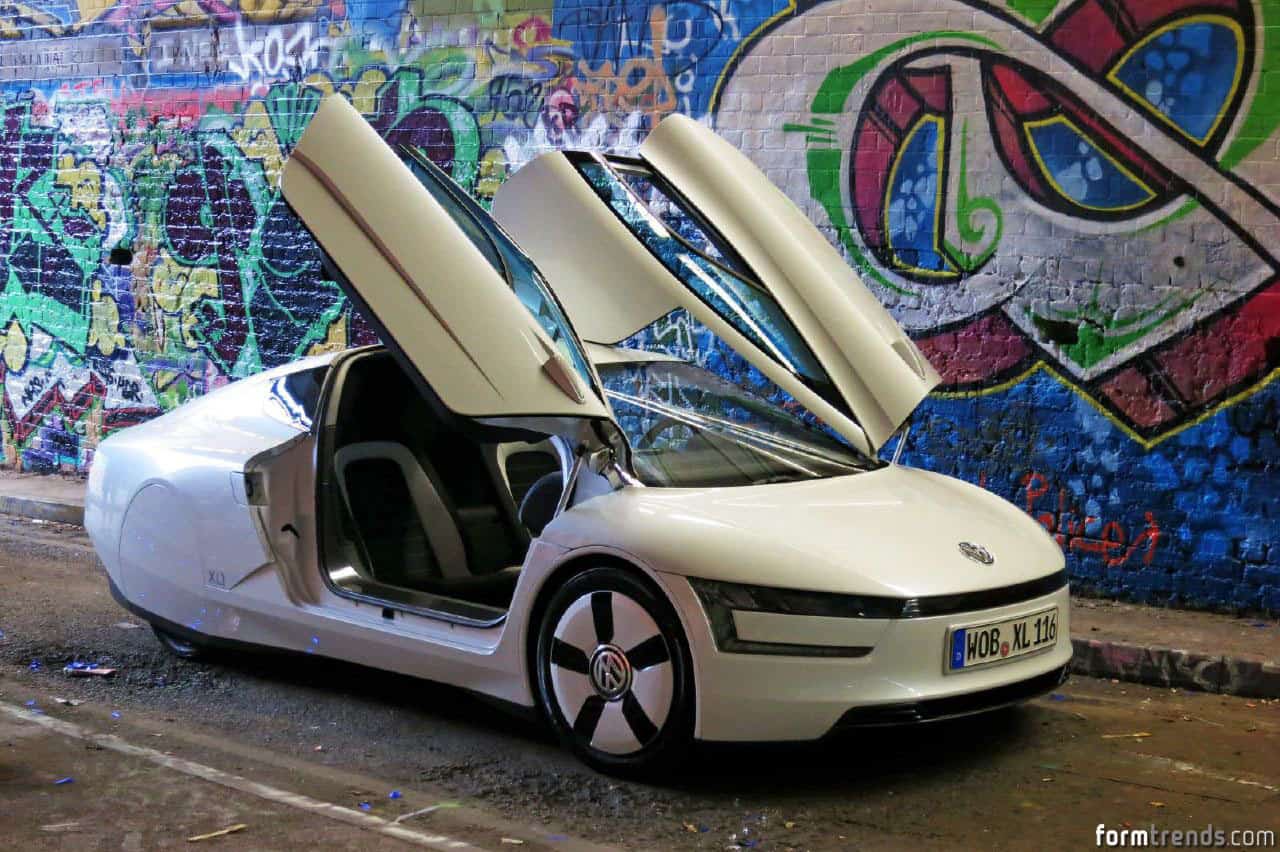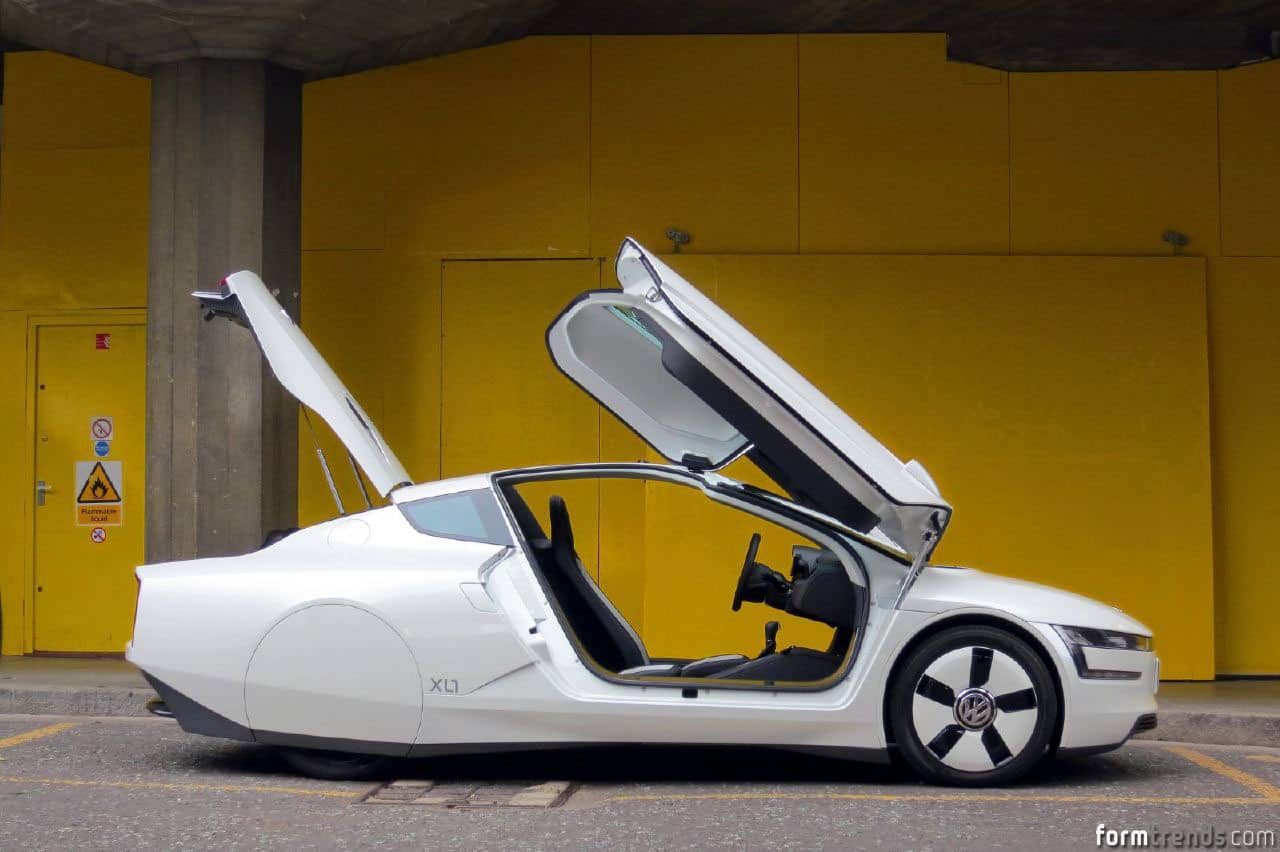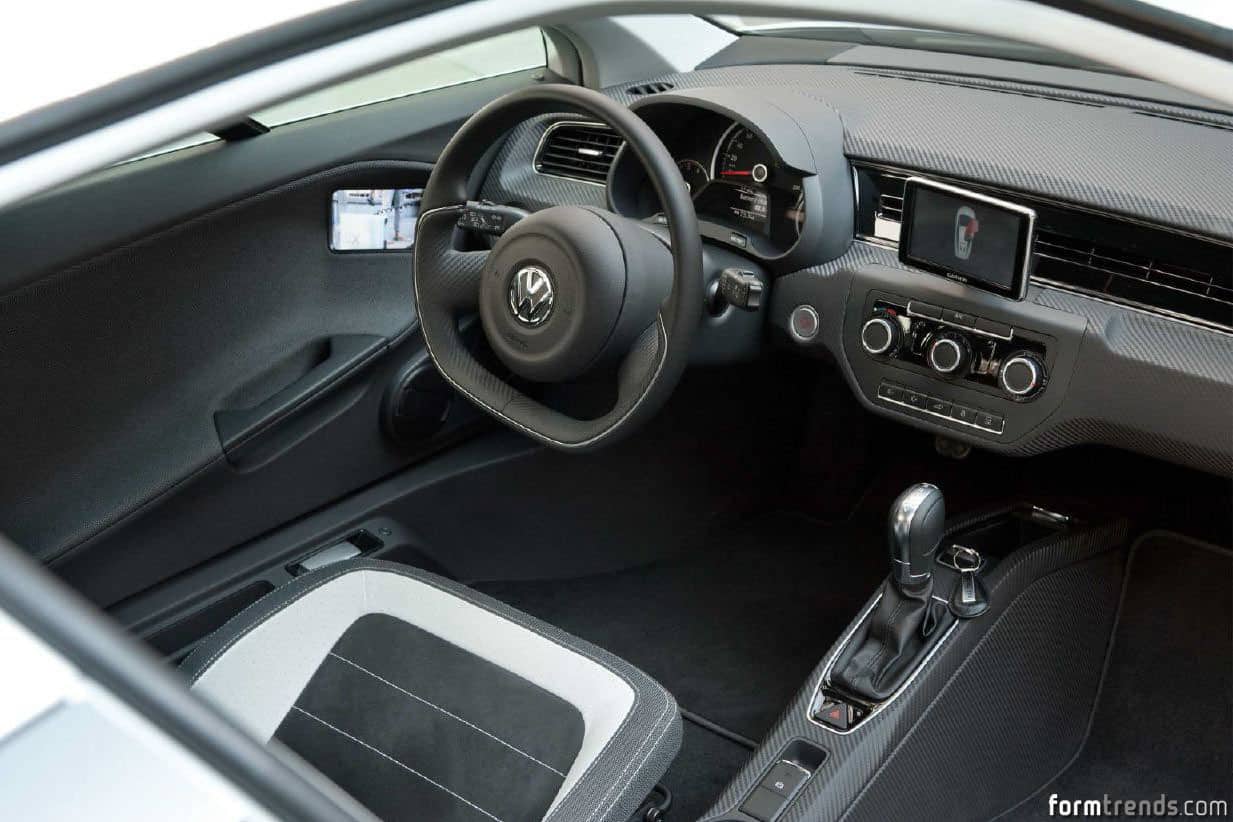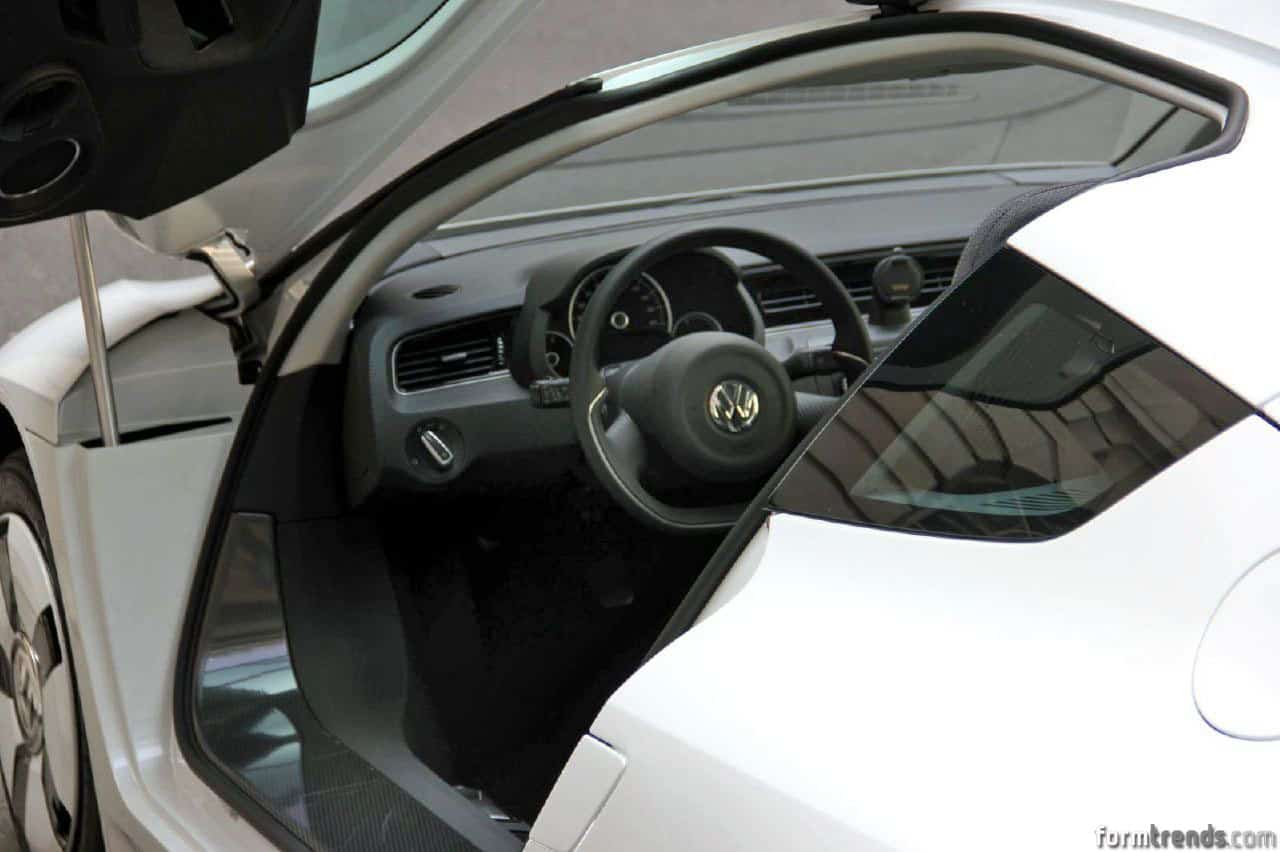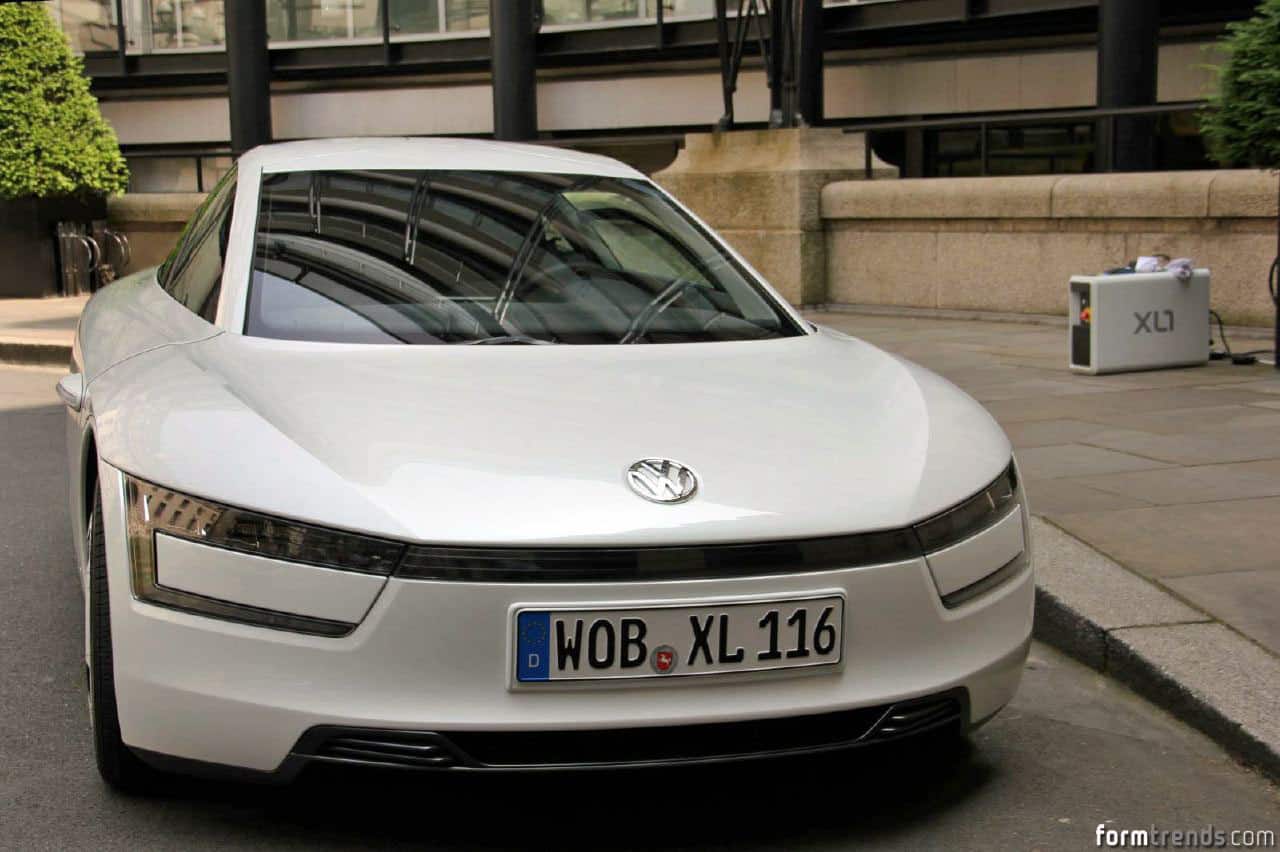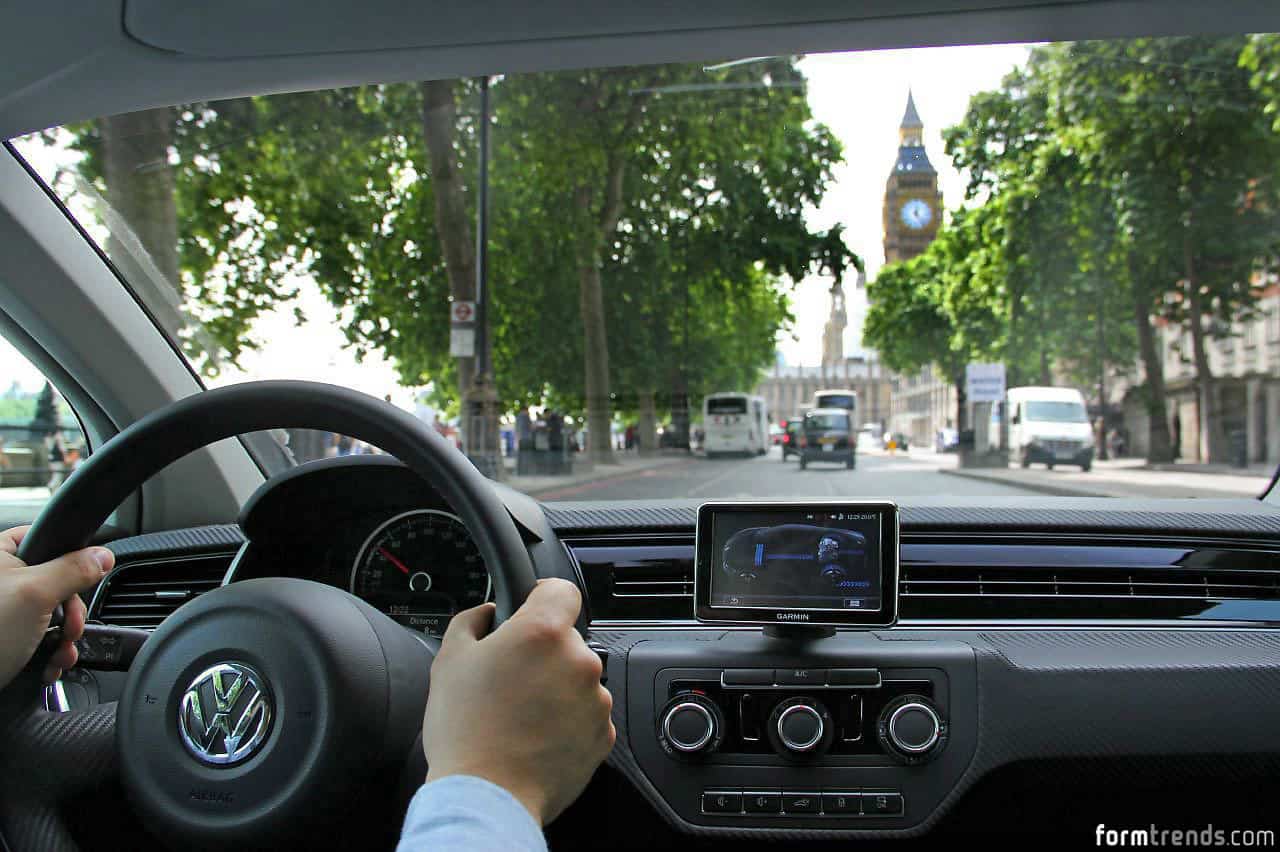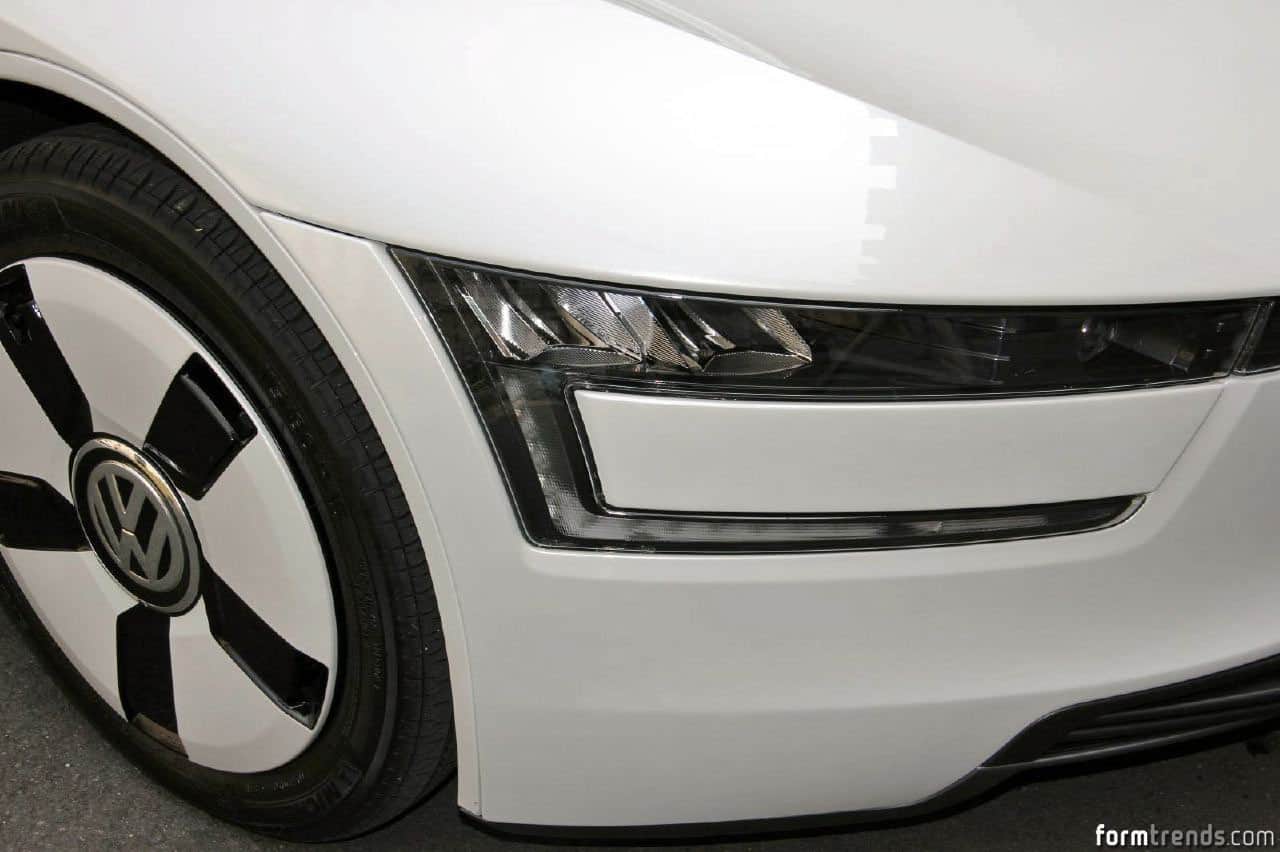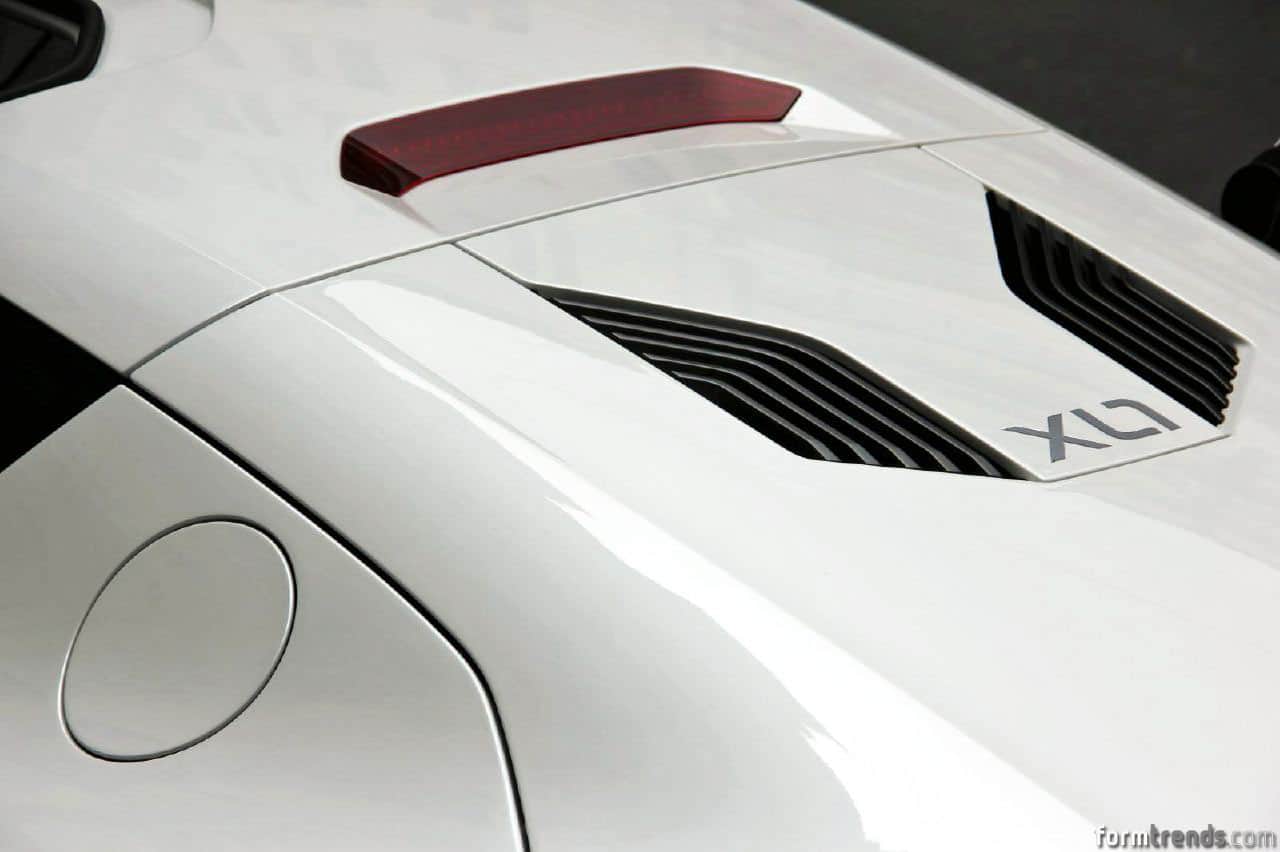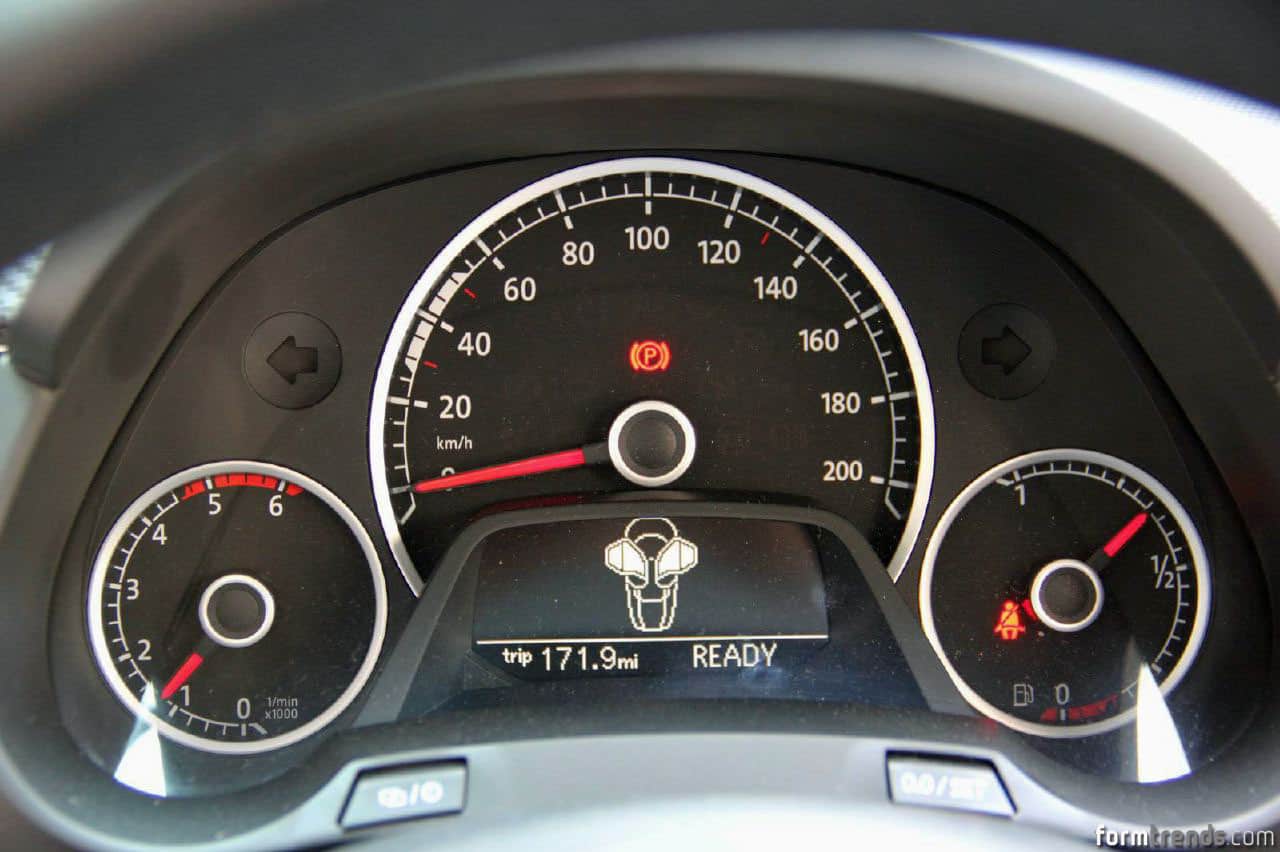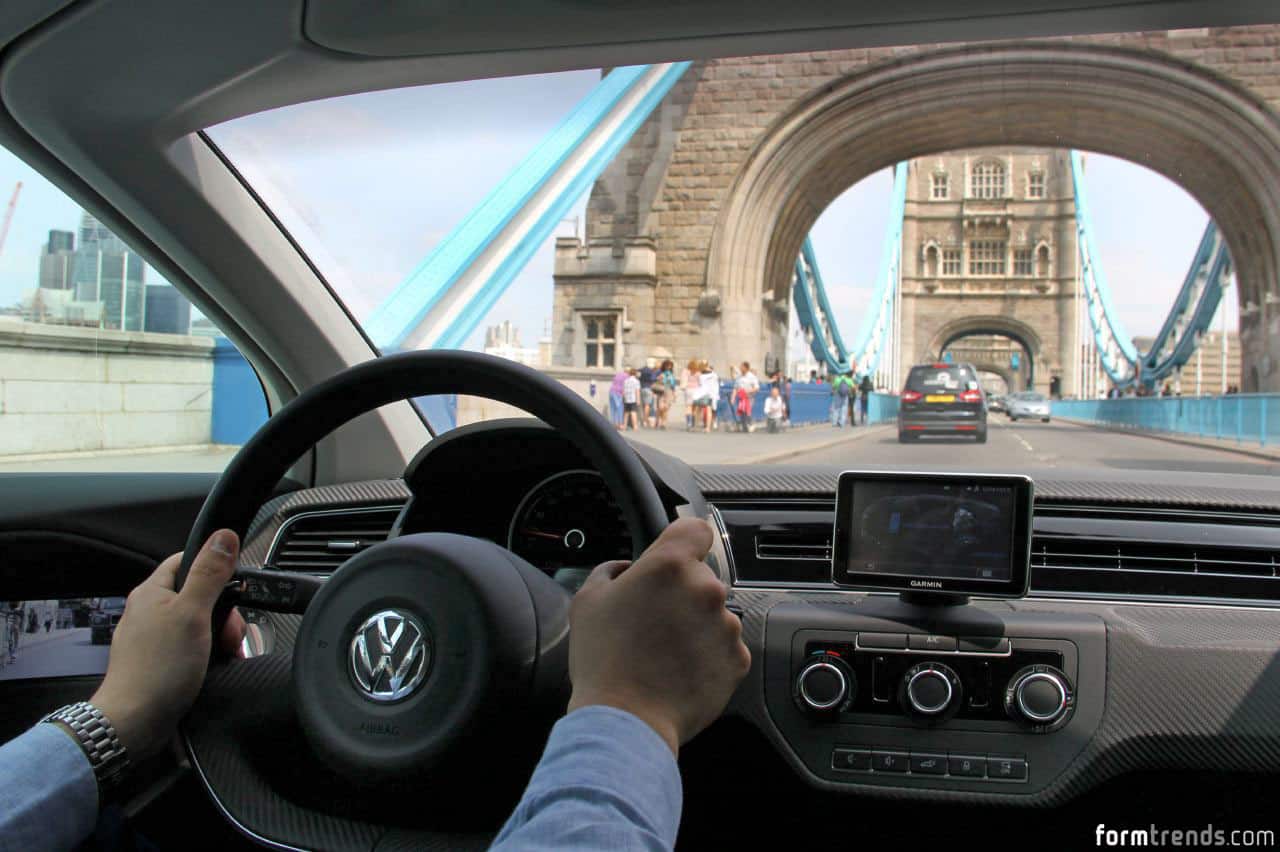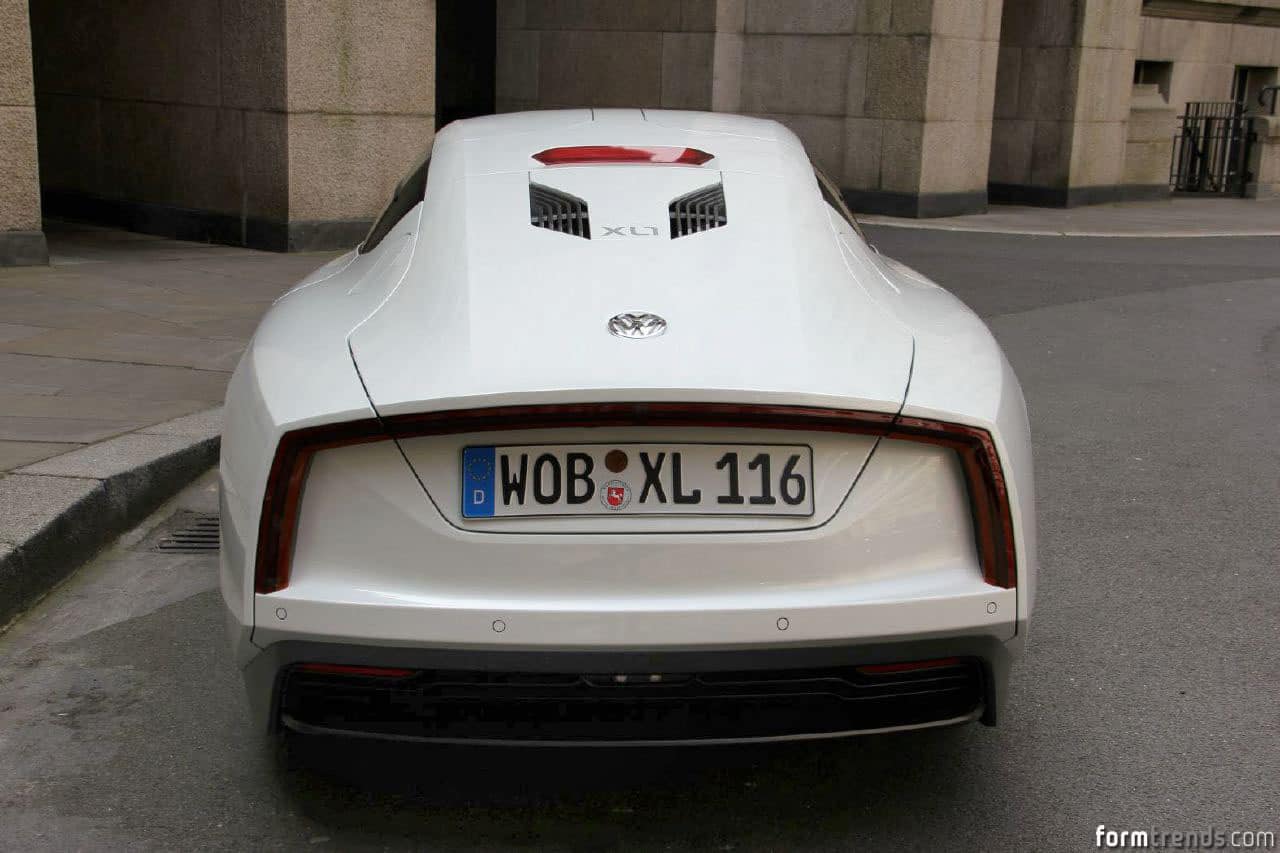Inside the Cabin
The interior of the car is as remarkable as its exterior. Its minimalistic design conceals what are big innovations.
Climb through the half-gullwing doors and over the wide carbon fiber sill and you’re welcomed into a cabin that exudes Volkswagen quality, though it’s devoid of some creature comforts such as power windows.
The number of buttons has been kept to a minimum and there’s a refreshingly simple IP, complemented by a standalone Garmin nav screen at its center — a design element that is currently in-vogue. The instrument cluster consists of just three pods conveying information, with two round dials flanking a larger main dial.
The thick carbon fiber sill, IP and seat frame lend a tech feel to the interior, in which you sit low. The side window — made of polycarbonate for reduced weight — features a ‘within-a-window’ element due to the reduced height of the door and there’s no rear window. None of this renders it claustrophobic, however.
The large windshield and relatively narrow A-pillars give you a clear view of the road ahead and to the sides. And the lack of rear window and shallow glasshouse are not an issue with rearward visibility either thanks to wide-angle side view cameras. They even provide a wider angle when the car is in reverse.

The cameras themselves are great. It only takes a second to get used their low position and location in the door, and once you do they work surprisingly well. The only drawback we experienced was that they cannot be adjusted or, more specifically, tilted down.
Most of the time the need for adjustment is unnecessary, but when parking our co-pilot had to hang himself out of the cabin to ensure he didn’t scrape the bodyside against a high curb. Fortunately the carbon fiber sills are wide enough to double as a seat.
The interior belies its relatively compact exterior dimensions. The strict two-seater actually feels more spacious than the front cabin of many C-segment vehicles, and with the carbon fiber seats — covered in Alcantra and perforated leather — offset by 10cm there is ample shoulder room between driver and passenger.
While the driver’s seat can be moved forward and aft as well as tilted mechanically, the passenger seat is locked in place further aft of the cabin. This not only provides a clear view out of the cabin for the driver, but also negates the need for a passenger side airbag, which would have had a negative impact on weight.
I manually adjust the driver’s seat and the small, flat-bottom steering wheel falls to hand. Then I press the start button. Nothing. My passenger from the engineering team in Wolfsburg tells me it’s running so I select D in a smooth action and venture out of hotel entrance and onto Westminster Bridge.
The Drive
Behind the wheel, the XL1 feels just like any other Volkswagen product. Its ergonomics are ideal: its limited gauges inform me of speed, revs and fuel while the Garmin provides auxiliary information. The XL1’s frugal intent is clear and its controls within easy reach and of high quality.
Thanks to the XL1’s low weight and narrow tires, the non-assisted steering isn’t heavier than that of more sporting BMWs. The ride is on the firmer side, but not jarring, and the car coasts smoothly when you lift off the throttle instead of snatching power back for the battery. So far so good.

With the two-cylinder diesel engine sitting mid-ship just 30cm behind the driver, its rattling noise startles when it first kicks on — a stark contrast to the near silence when the car is in electric mode. There are no sound deadening materials as they’re too heavy. Thankfully the engine becomes quieter once it’s had time to suitably warm up.
That’s also the case with the carbon ceramic brakes, which make an unsettling grating sound when applied. Though the symptom gradually diminishes as the discs warm, it takes time given the nature of this car.
What was most surprising was the XL1’s pick-up speed. At the behest of my co-pilot, I selected ‘Sport’ mode in the seven-speed DSG gearbox (no crippling CVT here) and hurtled down Embankment along the Thames river. Coupled with the electric motor’s 103lb-ft of torque, low weight and ride height, it felt faster than its 12.7 second 0-62mph figure would have you expect.
But to judge the XL1 on that kind of performance would be missing the point.
Over the course of the plug-in diesel hybrid’s three-day stay in London, it returned 317mpg at an average of 9mph. Astounding figures given the circumstances. And after ferrying journalists — not environmentalists — around London and covering 371 miles, our passenger put just 1.17 gallons of fuel in to fill the tank. Astounding.
Volkswagen’s XL1 is quite simply one of the most innovative vehicles to come from an automotive company since the Model T. Yes, that’s a strong statement, but one that’s not without merit. It’s efficiency figures are an incredible accomplishment and the fact that Volkswagen has managed to achieve them without alienating customers already used to their products is hugely impressive.
I’m sure Dr. Piech is very proud indeed.
See our gallery on the next page

